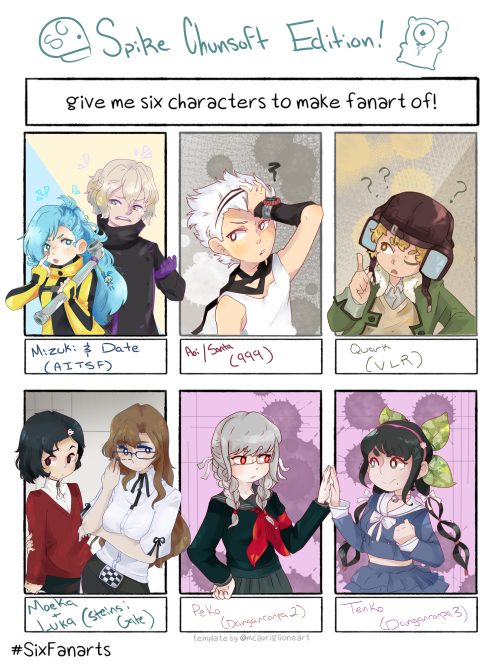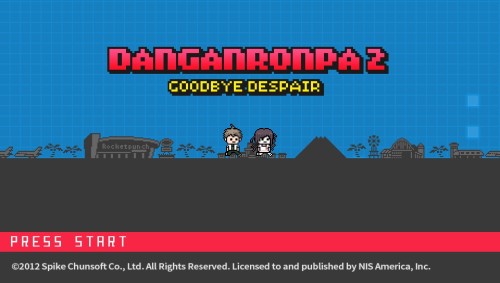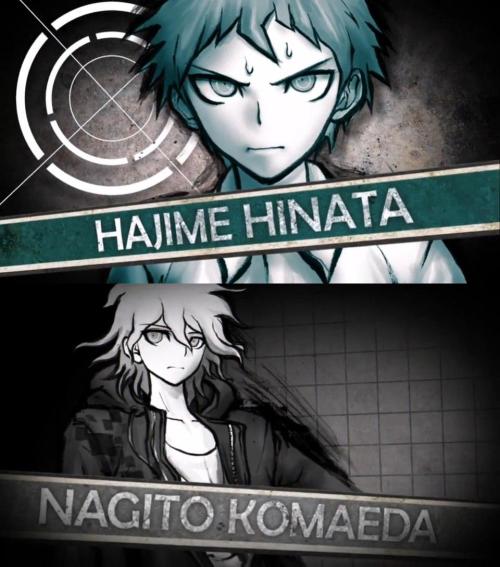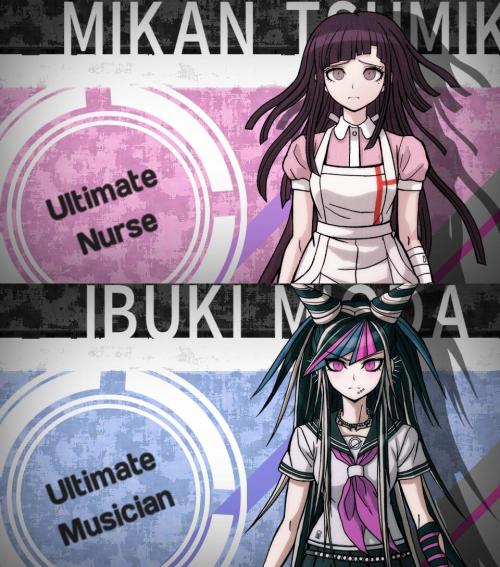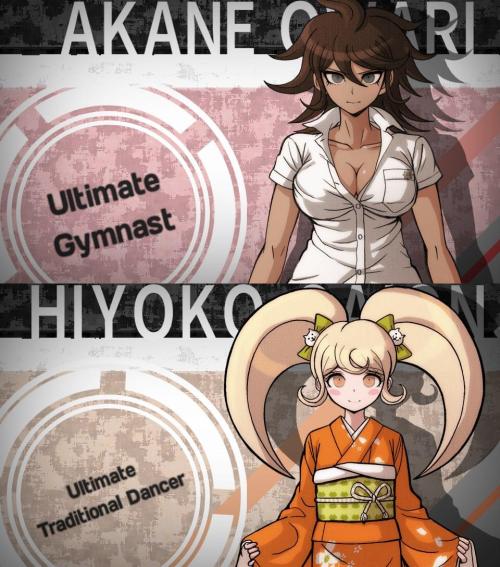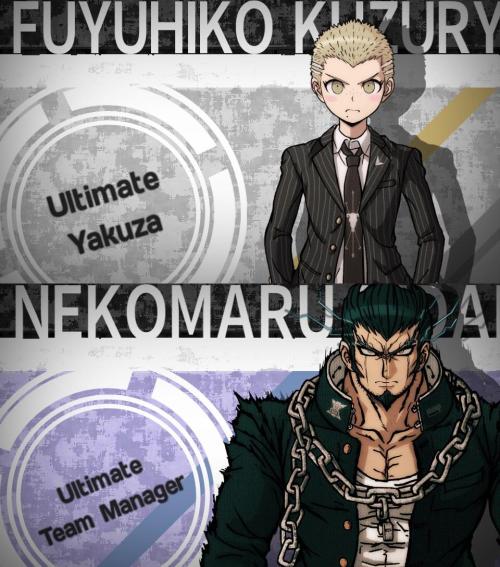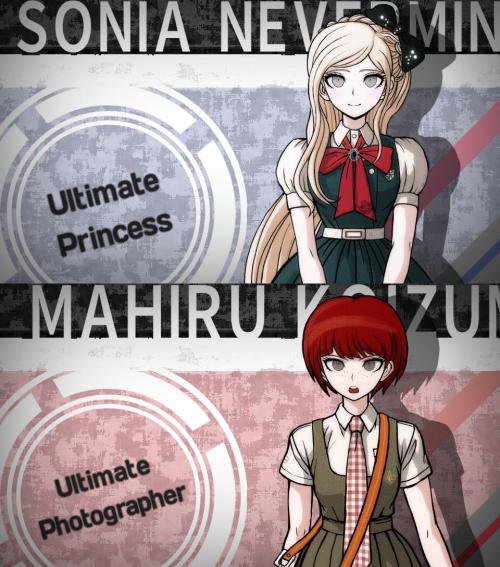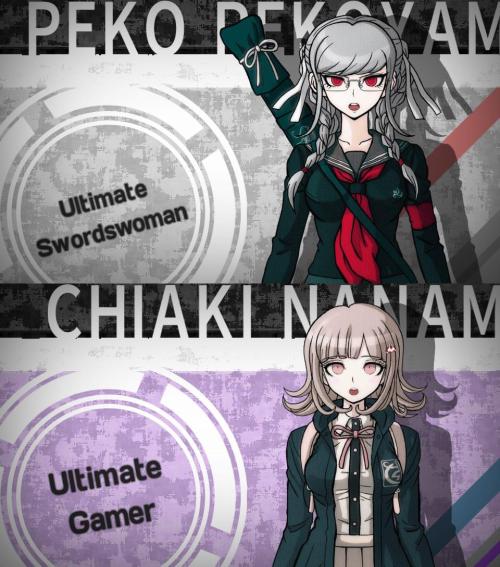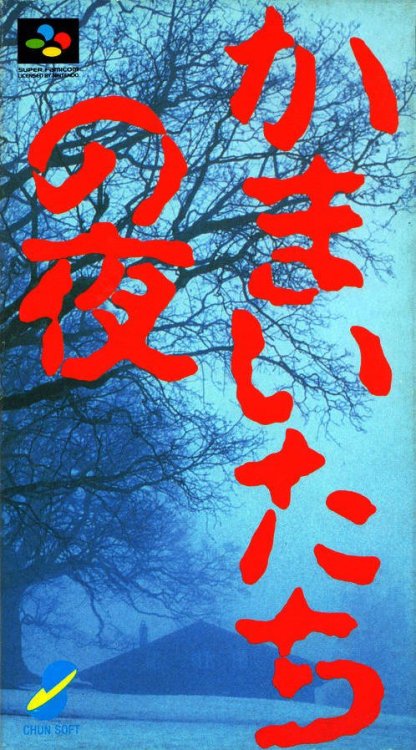#spike chunsoft
Mukuro&Monokuma are here to wish you all a happy and healthy holiday season this year. ❤️
Photography by @porkrindsthinkalike!
Post link
It’s been awhile since I did a Cosplayers as Kids post on here!
I found some old family photos while helping my mom clean up the house, so I wanted to make a holiday themed post before the month was over. I’m not sure how old I was in the photo on the left, but I do remember visiting Santa every year with my grandparents when I was younger.
Photography for the cosplay picture is by @porkrindsthinkalike!
Post link
It’s been a really long week for me, but I wanted to kick off the evening by sharing a throwback to a few summers ago.
I had so much fun cosplaying as MonomifromSuper Dangan Ronpa 2 and look forward to going through some more photos from this shoot in the coming weeks.
Photography is by @failfish!
Post link
“What do you think of my Halloween costume this year, Young Master?”
I can’t believe the end of the month is almost here! Halloween is one of my favourite holidays, and I’m really excited for next weekend. Do you have any special plans this year?
Photography is by @porkrindsthinkalike!
Post link
I wanted to share another summer throwback on here today, this time to the Cosplay Beach Day back in 2015 that I’d helped cohost. I had such a fabulous time cosplaying as Junko Enoshima that day! ❤️
Photography is by @holahallo!
Post link
Thank you so much to everyone who stopped by my birthday stream on Twitch the other day! I had a really fun time celebrating with you all, and now that I’ve taken a short rest I’m ready to get back to the grind. ❤️
Here’s a selfie from when I recorded my Pusheen unboxing video the other weekend! I’ll be sharing some more bunny suit Peko Pekoyama on here in the coming weeks. As always, thank you for your support with my cosplaying!
Post link
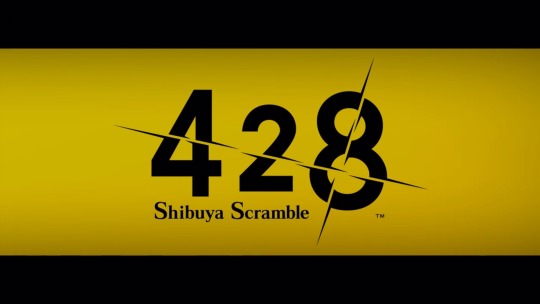
428: Shibuya Scramble is an unequivocal, truly Japanese game, and one that nobody ever thought would come out in English–and the doubters were sort of right. The title was a Japan exclusive for many years since its original Wii release in 2008 but after a decade of being out of reach for the English market this cryptically Japanese exclusive was somehow able to be cracked and come September of 2018 made the journey to North American and European markets on PC through Steam and both physically and digitally on the Sony PS4. Honestly I still can’t believe it and I own the darn game! The journey to getting this game out is surely an interesting one, as localization director David Kracker recounted on the Playstation blog that he had to fight hard to get the game pushed forward for a worldwide release outside of Japan, but ultimately was able to do so by showing that appeal for niche games such as these have been increasing steadily since its original Wii release.
For many people 428: Shibuya Scramble will be their first experience with a Chunsoft sound novel–especially since the localized Kamaitachi no Yoru (Banshee’s Last Cry) is downright almost impossible to play now. Last blog post I discussed in detail what the heck a sound novel even is, and went through a brief history of the visual novel market in general covering where Chunsoft falls in and how much they contributed to the genre. So because of that I won’t go into too much heavy details on sound novels today, but the short and simple answer I gave in my previous entry is that a sound novel is two things. The first of which was a dated term that Chunsoft used regularly (mostly on the Super Famicom and Sega Saturn) and has since fallen out of use in favor of adopting visual novel. The second of which is the more complicated answer that sound novels are both the aforementioned term that was used by Chunsoft for their brand of visual novels and also a certain style of visual novels that would follow years later by other companies that were heavily inspired by the early works of Chunsoft often aping their presentation and narrative style, with 07Expansion’s Higurashi - When They Cry being one of the most popular examples.

If all that sounds like a bit much, or is just all greek to you, don’t worry–all you have to really take away from my rambling is that the Chunsoft seal of quality with 428 really means something, especially to fans of visual novels. You see, 428: Shibuya Scramble is actually a spiritual successor of sorts to Chunsoft’s earlier Machisound novel released in 1998 on the Sega Saturn and later Sony Playstation. Machi was a highly well regarded game for its time that was a big hit both critically and with gamers, but despite its constant praise still sold poorly. Over the years people started to discover the game through its solid word of mouth and old fans and new fans alike were always clamoring for a sequel. After many years of begging Chunsoft finally delivered just that, and this is where 428: Shibuya Scramble comes in. By no means a direct sequel (so don’t worry you definitely DO NOT need to play Machi to understand the story) 428 is set in the same city of Machi (aka both take place in the same fictional version of Shibuya), and super fans will be able to spot some references and cameos from Machi sneaking in.
428: Shibuya Scramble is essentially a dream game to many hardcore fans in Japan that waited anxiously for a return to form from Chunsoft. When it came out the game even famously got a perfect score of 40 in the well known Famitsu gaming magazine–and this was back when you could still count perfect scores they gave out on your fingers, only 8 games prior made that list; nowadays the magazine is known for being far more forgiving with its reviews. So basically, what I am getting at is this is yet another game that was pretty huge back in Japan but sorely skipped over worldwide.

You may be thinking to yourself then, that’s all well and good, but what about the game itself? Well let me get into that. 428: Shibuya Scramble is as its name implies, a game about Shibuya, while you do take control of characters in the game, at large the characters themselves all feel like a part of the city. Shibuya is a living, breathing entity in 428, and you really get to explore the entire city from multiple perspectives in this one long, crazy day. Shibuya’s story is your story. There are multiple characters you get to play as and each one has their own unique, individual story to tell, but each story is interwoven into the others and they begin to overlap in creative and fun ways. This is where a large part of the game play comes from; finding out how decisions you made with one character affects the fate of another character.
Say for example if you are being chased in one character’s story and decide to run into a busy city street to escape your pursuers thus causing a traffic accident, in another story the character you are playing now is stuck in said traffic accident and cannot progress their story leading to a bad end. Everything you decide to do with one character not only affects that character’s fate but may even affect the entire city’s at large and change the outcome for every other character you play as too. Finding out how to best affect the story by jumping around the multiple characters and getting everything to play out just right is a lot of fun and no surprise was also a major feature in Machi prior.
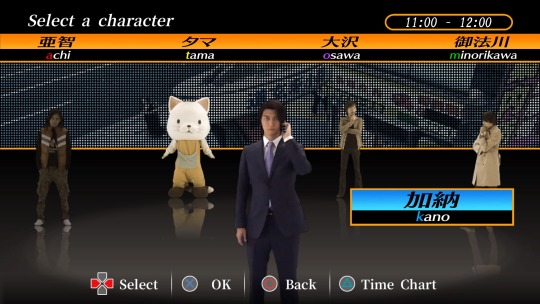
There are a bevy of characters to interact with in Shibuya but the multiple residents in this major Japanese metropolis you take direct control of are Shinya Kano, a rookie detective trying to make his way in the force and crack a kidnapping case, Achi Endo, an ex-gang leader with a heart of gold trying to make Shibuya a better place, Minoru Minorikawa, an investigative journalist on a mission to save a life, Kenji Osawa, a brooding genius that just wants to be left alone but is trapped inside a corporate scandal that goes beyond anyone’s imagination, and Tama, a poor soul trapped in a big furry cat mascot costume that just wants to be free from the hell that is a terrible part time job. Each character has their own unique flavor they bring to the table and their own individual plots range from comedic to serious, romantic to frightening, and everything else in-between. Kano’s scenario is a pretty straightforward crime drama, while Osawa’s plays like a physiological thriller where you don’t know who to trust, meanwhile Tama and Minorikawa’s scenarios will have you on the floor laughing at the insane hijinks they manage to get into somehow, and Achi is kicking ass beating up thugs and saving a lost girl.
428 manages to combine all these different kinds of smaller stories into one large story seamlessly and it’s an incredible experience jumping between all these fun characters and seeing how they eventually interact with each other as the plot progresses. It’s hard for me to even pick a favorite character in the game as all of them are so well written, and so different from one each other. If I had to pick though, I would say Osawa is probably the protagonist I relate to the most and a lot of his big story moments left me teary eyed and really moved on a truly genuine personal level (I don’t think I’m a genius like him though).
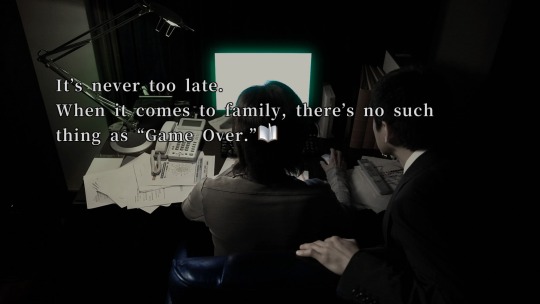
I can praise 428 to the high heavens, and really a large part of me writing about it today is to do just that, but there is an elephant in the room I probably should address at some point. Something truly horrendous, something that prevents the game from ever being a true masterpiece, something that scares everyone away, the horror of … real life actors! Yeah, as I am sure it’s obvious by this point 428 uses real life actors and was actually filmed on location in the city of Shibuya. A lot of people are put off by this and honestly that kind of bums me out that so many are so unwilling to even try different things.
To go off on a bit of a tangent, my own personal opinion is that I freaking love the way 428 looks. I’m someone that quite enjoys campy FMV video games; stuff like Night Trap or any Tex Murphy adventure game is solidly right up my alley. I also enjoy unique mixtures of real life and animation, so I love rotoscoping a whole lot–I’m always ecstatic when I find a cool movie or animated series that is rotoscoped, and that’s a large draw to me for games that use it such as Hotel Dusk. So no, I really think 428 is a beautiful game visually that was made by real pros who had to use guerrilla film making in order to bring their vision to life because of laws that prevent filming on location in Shibuya. What the team was able to do here, while also hiding it from “the man” is incredible work!

Contextly Chunsoft’s sound novels opted to not use the now established format that predominantly is how visual novel look. Originally with Otogirisōthis was because visual novels were still in their infancy and the now ubiquitous presentation where sprites are shown in front of background art had not yet taken off. Nobody really knew what visual novels at the time should look like. Otogirisō is actually commonly attributed as one of the earliest examples where a visual novel had background art to begin with and wasn’t just mostly text or sprites presented over a black void. Chunsoft kept their games pretty consistent visually from that point, and characters were often not seen on screen, usually just presented through the use of silhouette if needed. This really helped the “novel” aspect of their visual novels, since you had to imagine the characters’ appearances mostly through the narrative descriptions about them just like in literature.
Over time this changed with the advent of CD hardware which meant the use of still image photography and Full-Motion-Video could really take off, and Machi ran with this new hardware looking much like how 428 does. You can say these games really have a more broad appeal to them too as they are not just “anime” games but games anyone can enjoy just like a good book. This while true in Japan does get a bit tricky for a localized title as a majority of the actors are Japanese which is off putting to a general public not used to watching Japanese cinema or TV dramas. For better or worse 428 is an unequivocal Japanese game, but I really implore anyone who is even the tiniest bit interested to try it out for themselves (especially since there is a free demo) and stay open minded about the game, because if you do, you will find one of the best written, and best localized games in a generation.

Sega Saturn
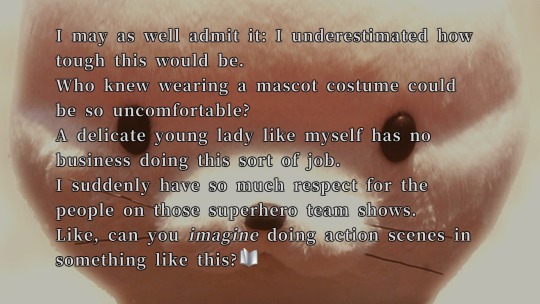
The truth is it will be very unlikely we will ever see a game like 428: Shibuya Scramble come out in English again. This was a very unlikely localization to happen in the first place, and a very risky one, but it sadly was not a runaway success. Anyone interested in the history of visual novels, sound novels, or seeing one of Chunsoft’s greatest titles definitely shouldn’t pass this game up though. And anyone willing, I really recommend 428: Shibuya Scramble hard. If you love good storytelling in gaming, there isn’t any better than what’s here. The story in 428 is so heart felt, and uplifting that I found myself crying a lot during my playthrough. I laughed, I cried, I found tons of inspiration for my own writing, 428 truly is a game that changes you. I think those are far too rare nowadays. This is a game that should be in any niche gamer’s PS4 or Steam collection.

I remember when visual novels weren’t quite known as well as they are today. By no means are visual novels a mainstream genre of video games–in fact you won’t be hard pressed to find some “expert” try to argue with you over how they are not games at all–but their notoriety is far more than that of even just ten years prior. For the longest time visual novels were seen as just an anime fandom “thing” that mainstream gamers paid no mind to. Very few titles were discussed outside those that had animes be it a TV series or an erotic OVA, and even some of the earliest visual novels localized into English were done so by anime and manga translation companies and not actual video game publishers.
If I had to pinpoint a time in my own memory where the genre started to get noticed more it would be when the Nintendo DS took off. With the DS there was an increase amount of western releases for visual novels thanks in large part to its touch screen interface working well with adventure style games. This wasn’t just noticed by Japanese developers either as a fair share of American and European made adventure style games were developed for the console as well. It seems everybody was anxious to utilize the system’s unique features when the DS started soaring in popularity. The point ‘n click and visual novel genres really had a home on the DS, and because of that a lot of people outside of just the anime community got a taste of these kinds of games with beginner friendly titles such as Ace Attorney, Trauma Center, and Hotel Dusk.

However, despite the Nintendo DS (and later to a lesser extent the PSP and PS Vita) giving gamers a finely curated and easily digestible dose of the genre I’d say the sad thing is the push was pretty small and died out quickly. Instead what seems to be the biggest reason why most video game outlets nowadays talk about visual novels are because of the parody dating sims that started to grow in popularity. Hey, do you want to date some monster? Is your girlfriend a llama? Maybe all you need in your life is to date a pigeon. Don’t try to hide it, we all know you secretly wish you could go out with a YouTuber. Not into dorky millennials, well no problem, we got a game for you–that is if dating other people’s dads is a you thing. Yes, this is the era of the wacky, silly dating sims taking over in the English market. It wasn’t always like this however, and yes Japan has had a long history of doujin dating sim parodies themselves, but lately it feels like all people know are the parodies that make good YouTube videos to react to instead of what a large amount of the games in the genre can offer.
Don’t get me wrong however, I’m by no means saying parodies do not have a place nor should they stay out of the limelight, and I definitely love that this fad has ushered in a wave of indie made English titles–but simply put this wave lacks so much variety and has been stretched so thin by this point. For every one creative title that pushes boundaries and gets new people interested in visual novels there are ten bland titles spilled all over Steam that feel like they were made by people with barley a grasp on what a visual novel can be outside of either parody dating or “boobies are pretty awesome”. Some of these bland games are even really well made and have a lot of care and attention added to their interfaces and artwork, but when push comes to shove, they are still just a basic joke stretched to its thinnest level. Visual novels don’t have to be that however, and while most mainstream gaming outlets may still be joking about how great it is to date your kitchen appliances, you don’t have to (unless you want to, in which case I recommend dating the toaster for he is the bravest of all kitchen dwellers).
A lot of this misunderstanding can be tied into the nebulous relationship between visual novel and dating sim, two “genres” that many people debate are separate things entirely yet due to the overlapping nature of the two they are often confused for each other. There’s a great article by Brian Crimmins online that actually goes into heavy detail about how visual novels came to be as a genre and how over time both visual novels and dating sims affected and evolved each other. It’s a wonderful read that I really recommend it for anyone curious about games such as these, but either way, whether or not you think visual novels and dating sims are the same thing or should be counted as separate but similar genres of games; it certainly doesn’t seem to stop most western gaming outlets reporting solely on gag dating sims as visual novels and taking away a majority of people’s attention from so much more that these games can offer.

I take back all my complaints
I somewhat lost focus and started rambling today, so let’s move on now and finally discuss what I wanted to talk about–that being, despite there being well known visual novel developers to the tight knit community that follows games such as these–examples including but not limited to: Mages, Type Moon, or Nitroplus–my favorite developer often seems forgotten in the conversation. What company is that you ask? Well, it’s Chunsoft. So today I want to talk about why Chunsoft really should be talked about more in the western fandom and all their contributions to the genre.
Chunsoft is one of the many long standing Japanese developers that have been around for every major home console since the Famicom. Nowadays they are known as Spike Chunsoft after their merger with Spike Co. in April of 2012. For the sake of this blog post however I am mostly going to refer to them as Chunsoft still given everything I really want to talk about predates the merger. Chunsoft’s involvement with Japanese style adventure games and visual novels more or less are tied to the very beginning of the genre. There isn’t quite a de facto known “first” visual novel per se, but most fans put the starting line at around 1982 or ‘83 depending on which game they may be talking about and which source they want to use for the release date (remember release dates were not entirely clear back in these early days).
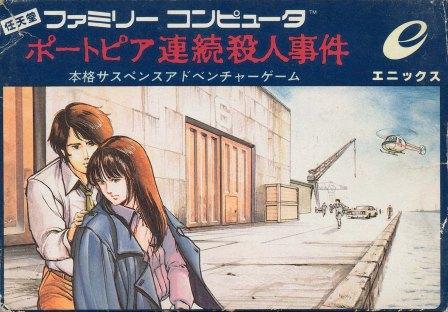
One of the earliest contenders for this honor is Yuji Horii’s adventure game The Portopia Serial Murder Case (Portopia Renzoku Satsujin Jiken), a game that was based around Horii’s interest in western style adventure titles, much like Horii’s later known legendary game Dragon Quest was based around his fascination with Wizzardy and Ultima and how to replicate those games in an easier to understand interface for his home nation. It’s here we can see “visual novel” wasn’t even a blip on the radar yet, and there was no definitive understanding of what genres for games really were at the time. Portopia proved to be a major hit during its release however and lives on even to this day as a fondly remembered game (and also a Japanese internet meme). Chunsoft handled the porting of the title to the Famicom and this was the beginning of a long business relationship between Chunsoft president Koichi Nakamura and Enix’s own Yuji Horii as in the years to follow Chunsoft would develop the first five entries in the hit Dragon Quest franchise for Enix.
With the birth of the Super Famicom things began to change between both Enix and Chunsoft. Having developed games primarily for the publisher Enix Chunsoft felt they should move into their own publishing, and soon got certification from Nintendo to do so. After slaving away on four Dragon Quest titles on the Famicom, and also working on the fifth title for the Super Famicom, most of the employees at Chunsoft were burned out so they decided their first self published title should be a simple game. Koichi Nakamura wanted to help make gaming more accessible at the time and took both the team’s exhaustion and his desire for a more casual audience into consideration when they moved forward.
The title Nakamura needed to make had to be simple; a game that anyone could be able to figure out to navigate–even those intimidated by a controller, but despite that also needed to take advantage of the more powerful hardware of the Super Famicom by using Kanji scripts which again would make the experience easier on casual players who had trouble getting into video games because game consoles prior could only display text entirely in Hiragana or Katakana making the reading experience poor and hard to enjoy for Japanese players (see Japanese writing systems for more details). To all these ends the team at Chunsoft decided to create a game entirely around reading to tackle this Hiragana issue and show off the hardware (or at least the hardware’s Kanji capabilities) while also being something anyone of any gaming skill level could enjoy. The game would mostly be text for the player to navigate through and present choices at key moments in the story to advance, cutting out any complicated aspects from western adventure style games that might intimidate the unfamiliar such as solving puzzles or finding hidden items. This is how Otogirisō was born.

Otogirisō (Japanese for St John Wort) was Chunsoft’s very first sound novel, a nomenclature which has since confused the hell out of everyone. But what exactly is a sound novel you may ask? Well, people get kind of convoluted about it. Looking at the definition currently found on Giant Bomb a sound novel can be defined by its heavy reliance on sound effects and music to create a game’s atmosphere. Usually sound novels will use minimalist visuals and choose to emphasize the text over the artwork presented on screen–most commonly covering the entire screen in said text instead of keeping text only contained in a dialogue box. Something among these lines is the definition usually seen online when you look into it. It’s not entirely wrong either, but it’s also missing something to it. The term sound novel is a creation of Chunsoft themselves, and something they own a copyright on, this is also often brought up when you search sound novel, but at the time of its creation sound novel was meant to be something really easily understood and not this tangled mess of “a certain kind of visual novel”.
When Chunsoft first created Otogirisō the brand sound novel was added to its box in order to help potential customers understand what kind of game it was. At the time it was just a way to let people unfamiliar with adventure style games (more commonly found in the west) to understand that this title will largely feature reading. In fact when Otogirisō was originally shown to the press in a 1991 Nintendo Space World show the game looked radically different from its finished project. Otogirisō was presented mostly as a book that the player would read, pretty much just like modern e-readers are now, with the exception that it included some sound effects and music. The press at the time was underwhelmed by this so Chunsoft took the game back to the drawing board and created unique visual backgrounds to give the game more flair and in doing so set a certain precedence for future visual novels to follow in.
An important factor to remember here is there was no clear cut way to define games such as these yet. The term visual novel had not yet been coined, and even gamers themselves were not very well aware of genres. As Nakamura admits in a Famitsu interview when asked about the creation of sound novels, “if you look back at the very beginning of video games, for me, the conception of “genre” didn’t exist. Take action games, for example: within that label you had shooting games [note: Shoot ‘em Ups], you had stuff like Pac Man and Dig Dug, and you had more puzzle-y games too. It was very diverse. On the same note, with adventure games, there were Ascii Magazine’s games like Ometesandou Adventure and Minamiseizan Adventure, which were pure text adventures… but you also had things like Mystery House, which had a few pictures, or war simulation games like Fleet Commander. I played all those, and while I recognized there were many different types of games, I never thought about it in terms of genres.” So basically, at the time sound novel was conceived it was just meant to be the most straightforward way to define this Japanese style of adventure gaming that Chunsoft was trying out on the Super Famicom.
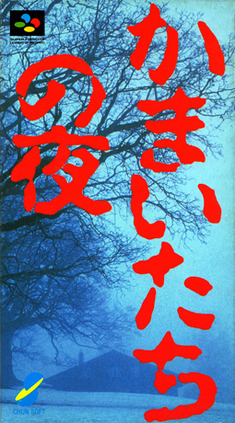
But does it end there? Well no. That’s only the part of the answer. Otogirisō ended up being a modest sleeper hit upon its release and this lead to Chunsoft to making more sound novels, with their next title being a legendary game that has since eclipsed Otogirisō as the de facto sound novel; Kamaitachi no Yoru (Night of the Sickle Weasels). This game was a hit, there’s no easy way for me to describe just how big it really was back during its release–out of the pantheon of legendary Japanese games that people in the US and Europe know jack about Kamaitachi no Yoru is one of the highest. Kamaitachi no Yoru is a fantastic game and I talked about it ad nauseum a few years ago when I payed the localized version called Banshee’s Last Cry, check that out if you’d like to know more, and if you’re still somehow able to play it then you’re definitely in for a darn good time.
With the a string of successes in the visual novel marketplace after both Otogirisō and Kamaitachi no Yoru, Chunsoft kept churning out games over the years, many of which are highly respected by the fandom still such as Machi and 428: Shibuya Scramble. All these releases of theirs had a certain tone and atmosphere, not to mention a distinct presentation that didn’t change much over the years and because of that did not look like what visual novels typically look like now. There’s a certain charm and narrative style between all of Chunsoft’s sound novels that is a really strong defining link in their catalogue despite a lot of these games being stand alone–and because of that people come to expect certain things upon seeing the term sound novel. Many titles would eventually come out not made by Chunsoft that shared similarities to their brand–these games followed in the footsteps of Chunsoft’s tone, structure, style, and presentation–and people began to notice, the most famous of which being 07th Expansion’s Higurashi doujin series. This is where we begin to see that murky kind of convoluted aspect of sound novels, as they start to transcend a basic label put on a box almost three decades ago and turn into their own little sub genre or maybe better described as their own style of visual novel.
So what the heck is a sound novel then? The simplest answer is a sound novel is a dated term that Chunsoft used regularly and has since fallen out of use for visual novel; the more complicated answer is that sound novels are both a term used by Chunsoft for their brand of visual novels back before the term visual novel existed and also a certain style of visual novel that is mostly inspired by the early Chunsoft games’ presentation and ambiance.

Top Left to Right: Otogirisō - Chunsoft ‘92, Kamaitachi no Yoru - Chunsoft '94, and Machi - Chunsoft '98
Bottom Left to Right: Higurashi When They Cry - 07Expansion 2002, Tsukihime - Type Moon 2000, and GeGeGe no Kitaro Maboroshi Fuyu Kaikitan - Bandai '96
Over the years Chunsoft has expanded, changed, and moved beyond their sound novel brand. Despite this however, they have never really stopped putting out solid titles in the visual novel market, and it seems like each new generation of gaming is blessed with at least one visual novel of theirs. My personal favorite title out of all their work from this era would definitely have to be 999: Nine Hours, Nine Persons, Nine Doors on the Nintendo DS. It was because of this game in particular that my love of visual novels in general really started, and Kotaro Uchikoshi’s sharp writing–especially the incredible dialogue and thorough thought narration in protagonist’s Junpei’s head still stands at the peak in my mind. Throw in beautiful sprite work based around art from legendary Capcom (and now freelance) artist Kinu Nishimura, and a fantastic soundtrack from the man himself, Shinji Hosoe and you got yourself a meeting of some fantastic minds. I’ve written about 999 in the past, and you can read about it here, but I still want to write more about it in the future, especially tackling the latest release it got in 2017’s Zero Escape: The Nonary Games.
Recent years have seen Spike Chunsoft make it big with their Dangan ronpa franchise, admittedly however the first Dangan ronpa title should be more attributed to Spike, as the game was released in 2010 two years before their merger. However the two companies together as one have since released three more Dangan ronpa games, and two (or is it three?) Dangan ronpa anime titles, and many, many rereleases and compilations. My own interest in the franchise isn’t nearly as strong as everyone else’s seem to be but I did however absolutely adore the last game, Dangan ronpa V3, with how many times it managed to jump the shark, upping the game, and constant plot twist after more ludicrous plot twist. If there was ever a way to end something like Dangan ronpa it was what that game did, and oh boy did I get a kick out of that.
Finally moving past Dangan ronpa, 2019 will see Spike Chunsoft develop and publish Kotaro Uchikoshi’s newest game, AI: The Somnium Files, for the Nintendo Switch, PS4, and Steam which just got its newest trailer and release date announced earlier this week. I am very excited for it personally and love the intricate and complex alternate reality game type marketing the team has been using to build up to its release! This is some next level stuff, and has been tons of fun all on its own.

Then there’s of course one more game I simply cannot pass up mentioning, 428: Shibuya Scramble. Now I briefly spoke this title earlier mentioning later sound novels that have been highly acclaimed, and trust me 428 is definitely beloved; its perfect score in Japanese gaming magazine Famitsu really meant something back in 2008 on the Wii. But why mention this with recent Spike Chunsoft games? Well the answer is easy, 2018 saw the much beloved, super Japanese game finally get an American and European release! And much celebration was had! If anything in this whole blog post remotely sounded interesting to you I really implore you all to go check it out either on the PS4orSteam, and see what a Chunsoft sound novel is all about. And for the impatient, I will be writing about it next on blog!
Despite Chunsoft changing over time and no longer using their sound novel brand, they have still put out many classic and fantastic games in the visual novel genre. Their later work may take a radically different presentation from their prior titles, but despite their moving away from that set style there are still other developers out there that keep up that mantle. Overall I think the effect Chunsoft has had on the genre is undeniable and anyone missing out on their catalogue of fantastic titles are really missing on some of the best titles visual novels have to offer. That’s why I really wanted to write this blog post about them and put into words my thoughts about this developer’s library that just seems so often overlooked by many others in the fandom, at least in my experience. I hope through all my grumbling, and “kids today” rant I was able to at least get somebody interested in trying out one of their games.

With less than a week or so to go, Halloween this year is fast approaching. So now’s the time to get in the last few frights and scares before we all start our unnecessarily long 3 month celebration of Christmas (What? Don’t try to tell me your January isn’t full of Christmas decorations that just refuse to die; like a zombie’s death-grip on some poor background character). Last year I was encumbered with a busy work schedule and really didn’t get to enjoy the frightful holiday, at best I think I saw maybe 20 minutes of Cujoon cable TV and that was pretty much the extent of my spooks that year. So this year I wanted to do something special and check out something truly horrifying. Which leads us to today’s subject: Banshee’s Last Cry.
Now what is Banshee’s Last Cry, I hear you asking. Well it is a sound novel released for the iPhone in the US during January of 2014. So then what’s a sound novel you ask. Well, that can be a bit complicated. Similar to a visual novel, a sound novels usually forgo character sprites and CG art and instead focuses more on the novel aspect. It’s much closer to the novel nomenclature and essentially feels like reading a digital book with music and sound effects to amplify the experience. Of course like a visual novel there are still moments where you get to make choices in the story that lead to different endings.
The easiest western comparison would probably be text based adventure games, a genre that similar to the much more popular point ‘n click adventure games faded away a lot as technology advanced but is making a comeback, especially in the indie scene on Steamand the Mobile phone market. For the sake of this article, that’s pretty much all you really need to know about sound novels, but yes, any nerd I may have just upset; you are right, it’s much more complicated; a lot of games will use that label and have just as many visuals as visual novels, and it also started life as more of a brand of games for Chunsoft (the developer of today’s game) but yet nowadays some of the most famous sound novels like Higurashi When They Cry have nothing to do with Chunsoft. Basically, the more you try to categorize things the bigger of a cluster duck it becomes (quack). But really, all you need to understand what the game play in Banshee’s Last Cry’s is like is to just think of classic text adventure games!

(The original Super Famicom box for Kamaitachi no Yoru - 1994)
In Japan Banshee’s Last Cry was originally named Kamaitachi no Yoru (かまいたちの夜 / Night of the Kamaitachi) but the localization company, Aksys Games, renamed it something a lot less Japanese. In America it’s pretty easy to have missed this game but in Japan when it originally released in 1994 for the Super Famicom it was a huge hit and has remained to this day a cult classic that has spawned off numerous sequels, ports, remakes, reimaginings, and even its own live action TV drama (that’s when you KNOW you made it!). Now obviously this mobile phone release is one of the many rereleases for the game, but for us in America this marks the very first (and at the time of this writing – only) time we have ever seen a release. This is quite momentous considering despite how incredibly popular Kamaitachi no Yoru was in Japan no one has ever tackled translating it for 20 years until this point, not even fan translations; any real attempt or interest shown in the fan community had always fizzled out until then.
This release while momentous however was also met with some concerns, the most obvious of which was its Americanization (or maybe Canadianization?). A lot of fans weren’t incredibly sold on this aspect of the English release when it first revealed. The plot was moved from Japan to Canada (Nagano to Whistler, British Columbia to be precise), and all the characters were renamed to match. The protagonist Toru became Max, and the heroine Mari became Grace, for example. The good thing is you can rename these two to whatever you like–I personally kept Max’s name but changed the heroine back to Mari because her English name also happens to be the name of my pet dog, and that’s weird–I don’t wanna romance a character with my dog’s name (plus I am too unoriginal to think up any other girl’s name for Grace/Mari). You cannot however rename anyone else in the story, and more importantly for those who took issue with this decision, the location change will stick no matter what.
In Japan they have a lot of folklore creatures, or yokai, who have a very long and rich history. This complex hierarchy of creatures, monsters, ghosts, and ghoulies all help to make for incredibly unique literature you just can’t quite recreate in English. That’s not to say the English world does not have its fair share of great horror writers who could conjure up their own parthenon of fantastically terrifying Lovecraftian horrors, but culturally the things that go bump in the night are really quite different between us. While in Japan yokai may seem like a fun part of their own local folklore that kids to adults all have, at the very least, a familiarity with, not much else like that is true for America.
You may have your occasional local legends like the Headless Horsemen (insert Christopher Walken gif here), but there really isn’t any cemented creature folklore that everyone just “gets” in America. At least, not anything nearly as rich and complicated as a lot of Asian or even European folklore creatures. The best alternative I can think of off-the-top-of-my-head would be Big Foot, and ‘Night of the Big Feet’ sounds about as menacing as it does sensual. It’s because of this that veteran translator Jeremy Blaustein (Metal Gear Solid, Snatcher) decided to go in a different direction. Americans don’t really have a great set of creature folklore, and obviously outside our own little niche communities of nerds, don’t know Japanese folklore either–and thus would not get much out of the material presented that way–but that isn’t to say there weren’t plenty of other folk creatures out there that are well known to Americans. While Blaustein’s choice of the Banshee has some awkward work-arounds (mainly an Irish ghost being in Canada and all that), it’s something pretty much everyone knows–a part of popular culture that has stayed with us all, and was a really great stand in for a Kamaitachi, or Sickle Weasel.

Not everyone knows what a Kamaitachi is, even anime nerds might not, as it isn’t the most popular yokai (sadly not enough people have read Ushio & Tora), but pretty much anyone knows what a Banshee is. Both creatures also work quite nicely together, setting the right winter horror atmosphere. In the middle of a terrible blizzard, the howling winds have enough force to knock down tress, shatter glass, and even flip over cars. You can feel the cold down to your bones, it’s bitter and resentful, and while it might just be your imagination, the thought that such fierceness could even be enough to cut through you doesn’t seem too ludicrous while out there in the storm. In the original Japanese text we had the Kamaitachi that are known for riding on dust devils, and their sickles that can easily be associated with a wind so fierce that it may even scratch you, while in the English text there’s the Banshee, known for their howls–like that of the howling wind. Anyone who has ever been trapped in a fierce wind storm can attest to the truly demonic, otherworldly sounds fierce wind can make–a howling Banshee’s does not seem far off during a terrible blizzard.
What’s important here is that the original essence of the story is coming out for the audience, and in that regard Blaustein succeeds remarkably, creating a very enjoyable reading experience that is truly on par with the Japanese writing. The text is a pleasure to read, and flows incredibly well. The utter horror and sense of being trapped truly leaps off the ‘page’ and it’s a genuinely harrowing experience while also not missing any of the charm and unique humor the original Japanese version is so well known for as well. In his own words Blaustein talks about his decision for such a strong localization as opposed to keeping the original folklore and setting:
“When I asked myself if the idea of small weasels with scythes strapped to the legs would resonate with a Western audience that has no such myth, I had to answer no. Furthermore, even the word “weasel” brings to mind shifty Steve Buscemi-like personalities as opposed to something supernatural and scary. In trying to make a true localization that would capture the essence as opposed to the trappings of the story, I decided Banshee would be more in keeping with the original SPIRIT of the game. From that POV, I feel that I am actually closer to the reproducing the feel of the original for a Western audience than I would be if I had kept it Japanese. It is hard perhaps to explain, but I feel strongly about it.”
So let’s finally talk about this story, as really it’s the whole meat and potatoes of the game and is what it’s all about. Banshee’s Last Cry has a simple premise at first: a group of people are trapped in an Inn during a terrible snowstorm, things soon become suspicious when three of the guests find a note slipped under their door that reads “TONIGHT@MIDNIGHT=DEATH”. The characters initially try to write this off as a prank but it doesn’t take long until people go missing and their corpses show up: the first of which is horribly mangled in a grotesque, almost implausible manner, that leads to the cast wondering if perhaps something supernatural is at play. It’s a Whodunit, with a spice of the potential paranormal. Think old dark house, but with snow.

There are 43 different endings in this particular version of the game, however many of these endings are death related bad ends. For example, let’s say you are given three options when it comes time to confront a potential murderer: one of these options will probably lead you to confronting the wrong person and accidentally escalating the situation until you through your own actions or the actions of another ends up getting an innocent person killed resulting in a game over. The second choice then might result in you choosing the right person but messing up how you confront said person and being killed yourself. That’s two bad endings right there, and 41 more endings to go. The third choice then is the actual right choice to keep the story moving down its natural progression. A lot of the branches in the story can work like this example I just made up, but don’t be disheartened as you can always skip ahead after the game restarts and get right back to where you were and try again. Plus completing endings may unlock new dialogue choices given to you and can lead to endings you could not have seen otherwise at the start of the game.
Despite the many death related bad endings out there to haunt you in your mystery solving there are plenty of other actual story progressing endings as well, and lots of different stories even to boot. Once you solve the main mystery and finally figure out the murderer and how they pulled off their killings, the game is not over yet. There are other stories that get told with the same basic setting and characters. Sometimes some character’s backgrounds and personalities change completely, other times some characters might be swapped out with new characters! This is especially true in a gag story you can unlock where the first victim who dies a particularly gruesome death is replaced by an overly flamboyant cross-dresser (or maybe it’s an anthropomorphic goat?) and hijinks ensue.
Yes, there also happens to be tons of comedy in this. Probably half the game is really hard edged and full of gruesome horror with crazy high death counts, while you white knuckle your way through it trying to find the bastard who did all this, if it’s even an human to being with, while the other half of the stories are gut busters that turn everything you know on its side and deconstruct horror tropes leaving you laughing the whole way through. Sometimes people are murdered horribly, sometimes you are caught up in a James Bound movie between a war of spies, and sometimes the game just goes absolutely nuts. There is honestly nothing quite like it, you can say Banshee’s Last Cry is an expert case of a video game that both terrifies and trolls its audience, and that’s the best part about it.


Out of all the crazy endings in the game I think my personal favorites have to be the one where you can decode a hidden message in the dialogue presented and learn that Chunsoft is behind a conspiracyto take over the world by brainwashing you and everyone else who plays their games, and the ending that pokes fun at Chunsoft’s other big series: The Mystery Dungeon games. If you ever played a Shiren the Wanderer, or the many, many, many other mystery dungeon flavored games such as Chocobo Dungeon, Etrain Mystery Dungeon, Pokémon Mystery Dungeon, Barbie’s Dream Dungeon, or even Call of Dungeon Medieval Warfare, you’d get a real kick out of exploring the basement of the Inn and discovering it’s actually an RPG Dungeon that you can dungeon crawl through, fight classic fantasy monsters like Goblins in turn based combat, and try to find treasure chests. This game is just an absolute marvel that keeps giving in how it messes with your expectations.
And this is truly the most horrifying thing about Banshee’s Last Cry, there’s nothing quite like it out there in English, and it’s already about to fade away forever. Banshee’s Last Cry launched in January of 2014, and since then has only had one update, about a week later after it came out and has never been updated since. This September (2017), Apple has launched their newest update: iOS 11 that moves their devices from 32-bit to 64-bit, in the process breaking a lot of past games and applications. A lot of developers have been prepping for this and have updated their products, but a lot of other apps have been left to wallow in oblivion (much like Shin Megami Tensei I – another miracle of the mobile market now dying with iOS 11). Banshee’s Last Cry has not yet been updated and very likely never will be. This is another game lost to the harsh reality of a digital market place. If you’re thinking maybe the Android version can still be saved, well unfortunately even though Aksys Games advertised an Android version. one never materialized. The only way to play Kamaitachi no Yoru in English is to have an iPhone that hasn’t yet converted to iOS 11, an update that is already a month old now at the time of this writing.
There may be hope in the future, as Spike Chunsoft has since shown some interest, a previous Twitter poll from last year over what games people may want to see localized saw “Kamaitachi no Yoru” (yes, not Banshee’s Last Cry) show up in it. While it did not win the poll there still might be a chance for it yet. Another sound novel in that poll, 428, lost as well but was announced for an English steam release. Perhaps if 428 can make it maybe Kamaitachi no Yoru can eventually too. There also happens to be a really nice and shiny new PS Vita remake to work off of for Kamaitachi no Yoru, that converted the game into a more traditional visual novel which will most likely have greater appeal to the English speaking market nowadays.
The future is hard to really tell, but such a fascinating and important game like Kamaitachi no Yoru deserves a better chance for an English audience to enjoy. It shouldn’t be stuck on a dead platform that won’t work on modern phones and just the few YouTube Let’s Plays that are out there of it. I cannot think of anything more horrifying than the lost of game like this.
Fun Facts:
1.) Kamaitachi no Yoru was originally made using photographs of the real world location it was set in as the backgrounds. The developers added in some digital effects where they were needed such as pixelated snow moving across the screen and the silhouettes of characters talking. When the developers could not get a background they wanted in real life they created miniature models for them, such as the wine cellar. The Mobile version of the game again does the same thing, but interestingly the English localization Banshee’s Last Cry, retook a lot of the photographs of the Inn setting by using a real Inn you can actually visit in British-Columbia. While some of the interior shots are the same, some are quite different. The miniature models and digital effects seem to have all stayed the same though. You really have to appreciate such workmanship in keeping everything as real and practical as possible. Here are some comparisons of the Japanese and English Inn used:
Kamaitachi no Yoru iOS Comparison2.) The music in Banshee’s Last Cry is just fantastic. I couldn’t really think of a spot to properly talk about it above but I really loved this particular version of the soundtrack. If you want to check it out you can should be able to find it on YouTube. I also uploaded the music to my Soundcloud as a back-up.
3.) While I didn’t want to go to the monstrous task of hunting down EVERY version of Kamaitachi no Yoru I did at least take some comparison screenshots between the original Super Famicom version, the localized Banshee’s Last Cry iOS version, and 2017 Vita remake that turns the game into a visual novel. Check below:
Kamaitachi no Yoru - SuFami - iOS - PS Vita Comparison







I made the characters from Ai: the Somnium Files with the Lily Story app
Been replaying a lot of these games in the lead up to NirvanA Initiative! Drop some SC characters from games like :Zero Escape, AI Somnium Files, Danganronpa, Steins Gate, ETC !
Post link

When you suddenly realize you got a ‘bad end’









